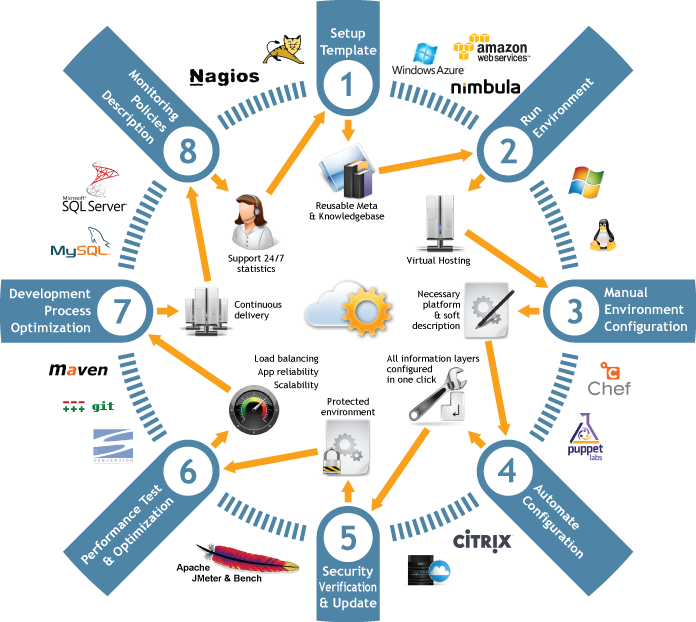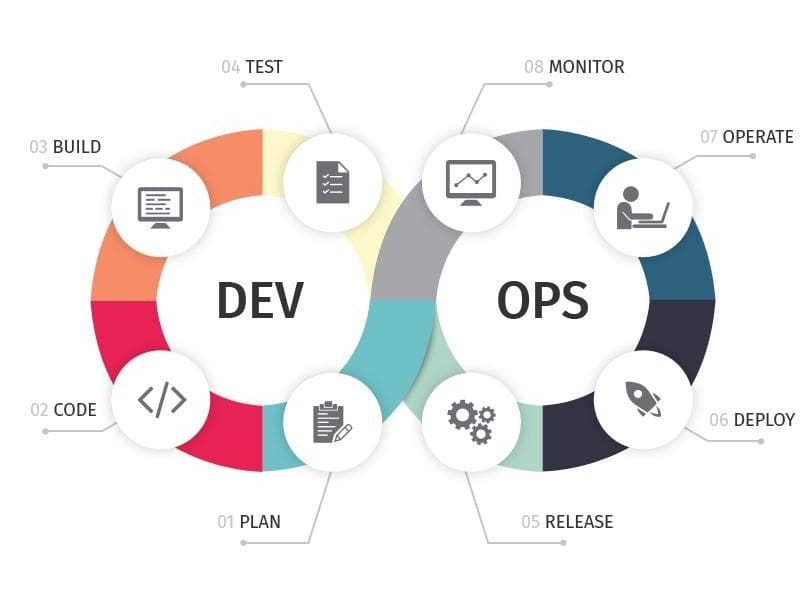DevOps process description
While people mostly think of DevOps as a methodology of performing IT operations, like supporting the apps in production, DevOps development process is crucial for timely delivery of new product features and services. As a Managed Services Provider specializing in delivering DevOps services https://itsvit.com/services/devops/ , we know the best ways to configure the DevOps deployment process — and we are going to highlight the details of DevOps process model.
First of all, the difference between DevOps development process and standard software delivery model is that a DevOps engineer has access and skills to work with a huge variety of software, tools and services available and builds a flexible DevOps process flow to meet the needs of any project. System administrators, on the other hand, have to work within rigid frames of the existing tool set, and unable to design and implement flexible systems.
Why should a DevOps development process be much better then? Here is what it looks like for a standard software delivery routine:
- A developer works in his IDE on his laptop or workstation and commits the code to the repository
- Once a batch of new code is ready for testing, a ticket for provisioning a new testing environment should be issued for the Ops department, to raise it on a dedicated server or a VPS. Sometimes the test environment is deployed on the same workstation, but it demands lots of resources to keep it up and lots of Ops engineer’s work time to configure it.
- Once the code is built and tested, it must be pushed to the project main trunk and on to the staging server. — by the same Ops engineer or system administrator.
- Once the code is thoroughly tested on the staging environment, it must be pushed to the production, ideally without any downtime. — by the same Ops engineers.
- The production environment must be also constantly monitored and backed up — by the same Ops engineers.
There are multiple routes to automate this process, yet these include a lot of work on behalf… you guessed it — the Ops engineers! And it must be done again, and again, and again. They need to think of any conceivable scenario an prepare scripts for it — and teach the developers to use these scripts right!

How is DevOps release process different?
- the developers and DevOps engineers gather and discuss the future product architecture and the best ways to automate the deployment process
- DevOps engineers prepare Docker images of the needed testing environments and deploy a Kubernetes cluster of virtualized machines atop Terraform landscapes
- Developers write the codebase of automated unit tests that can be run quickly to check the new code batches against hem
- DevOps engineers configure CI/CD pipelines — sets of instructions for Jenkins Workers — that automatically apply next actions based on the outcomes of the previous stage of the DevOps process flow.
- The same CI/CD pipelines can be adapted to push the code straight to the staging and production if the automated unit tests are successful. Automated production environment backups and restoration can happen the same way
- Using Kubernetes clusters with multiple replicas of databases and instances ensures seamless product updates without any downtime
- Once the app is in production environment, monitoring and logging its performance is done using ELK stack and Prometheus+Grafana or Nagios+Icinga or Sumologic or Splunk — using the same CI/CD pipelines with altered settings!
The point is, DevOps development process relies on a bunch of versatile tools that describe the needed results in declarative language and simple adjustment of several files allows adopting the system to produce new required results. This is directly opposite the rigid workflows that legacy system administrators had to rely upon.
Final thought on the DevOps release process model
As you can see, working with a bunch of versatile tools, working in close collaboration between Devs and Ops, building flexible and easily-adjustable pipelines — these are the main features of DevOps process model. These are essentially the characteristics every business wants to have in their teams — and DevOps release process allows you to have them!
